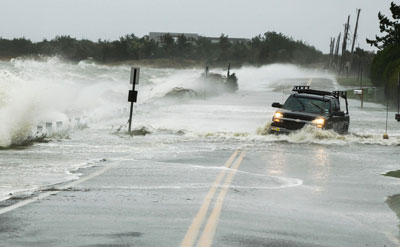Most people don’t want to think about hurricane protection, storms, or storm surges. The aftermath of recent events like Hurricanes Andrew in 1992, Ike in 2008 and Katrina in 2005 linger, and it’s easy to see the benefits of proper hurricane protection such as storm shutters or impact glass.
And yet it’s hard to get going and thinking about spending on reinforcements when many people have barely begun to relax from major repair or renovation expenses, and hurricane protection can seem like a “Well, maybe there won’t be a storm the next few years” kind of expense, despite evidence to the contrary.
Fortunately, there are inexpensive solutions that you can invest in right now that would keep you hurricane ready. It would allow you to sidestep the Catch 22 scenario where you may have a strict budget but you live in a hurricane-prone area.
The International Building Code
One of the first steps you should do is call a professional to help you find out if your structure conforms or exceeds the International Building Code. If you have time, you can even search for the code online and check it yourself. Just make sure to search specifically for the guidelines on hurricane safety and protection.
Basically, this code states that there are 2 standards to consider: areas that are prone to high winds and the construction of storm shelters. They also have an updated (2006) guide to property inspection.
The Concept of Continuous Load Path
If you want to reinforce your structure, work with the concept of continuous load path. This means using wood, fasteners, metal connectors, and shearwalls to form a chain that ties the house from the rood to a solid foundation.
With this solution, you can hold your structure down even in a Hurricane category 5 because it keeps all parts of the house intact. You see, once one section of your structure goes, it becomes easier for the rest to fall apart. As a general historical fact, houses and structures built on or before 1985 do not have the continuous load path incorporated in its design. However, this does not mean anything built after 1985 is safe. You will still need to have it checked.
Protect Windows and Doors
As an additional minor expense, you should invest in the hurricane fabric shutters or panels. Consider impact glass as well since these are vulnerable points of any structure. Doing this also serves to increase the property value of your home and lower home insurance premiums as well. You also get to save on heating and cooling utility bills and provide added protection for your family against intruders and flying debris.
Being prepared with hurricane safety measures is not just a financially smart move. It also lowers the level of fear any family member may have once they hear a storm is coming. At the end of the day, it’s all about keeping everyone safe and protecting your personal property from total damage.
Our team of experienced weather protection specialists will evaluate measurements and provide you an estimate. Simply fill out the request form to get started!




